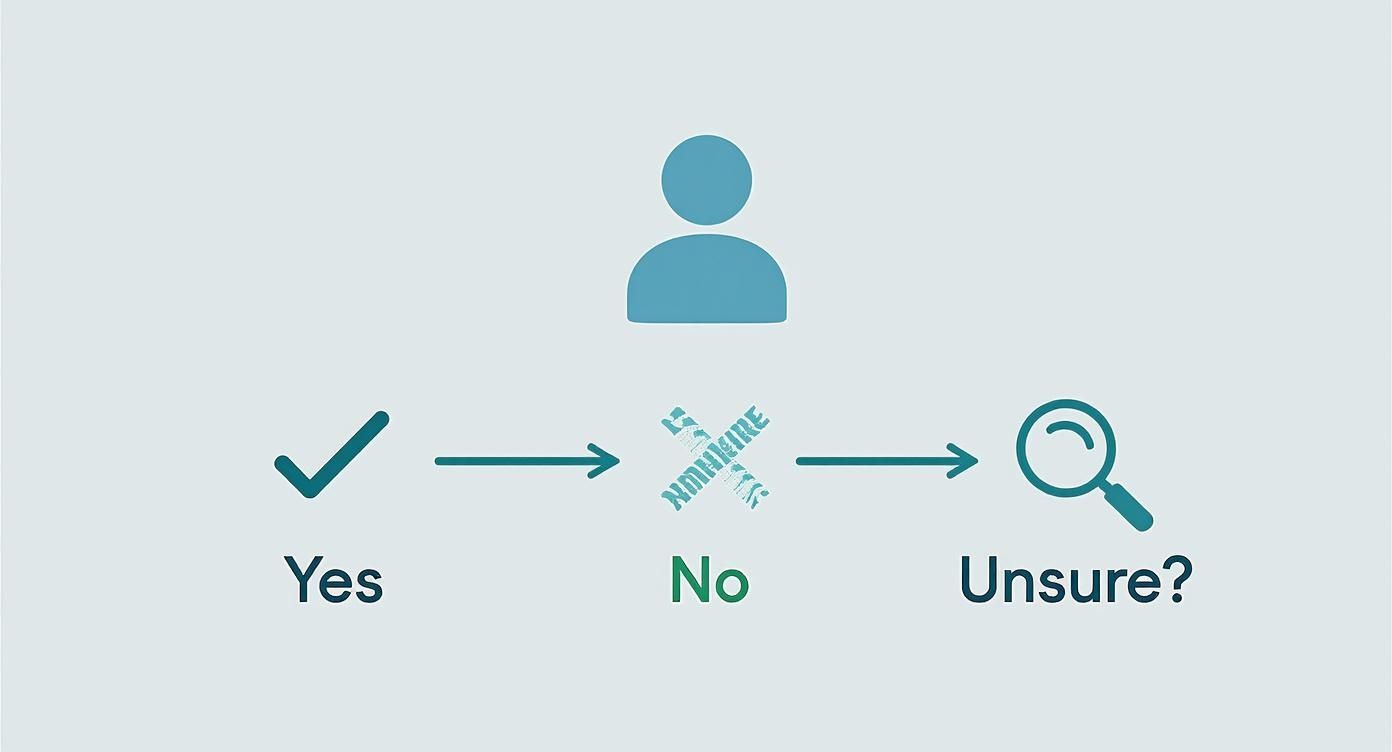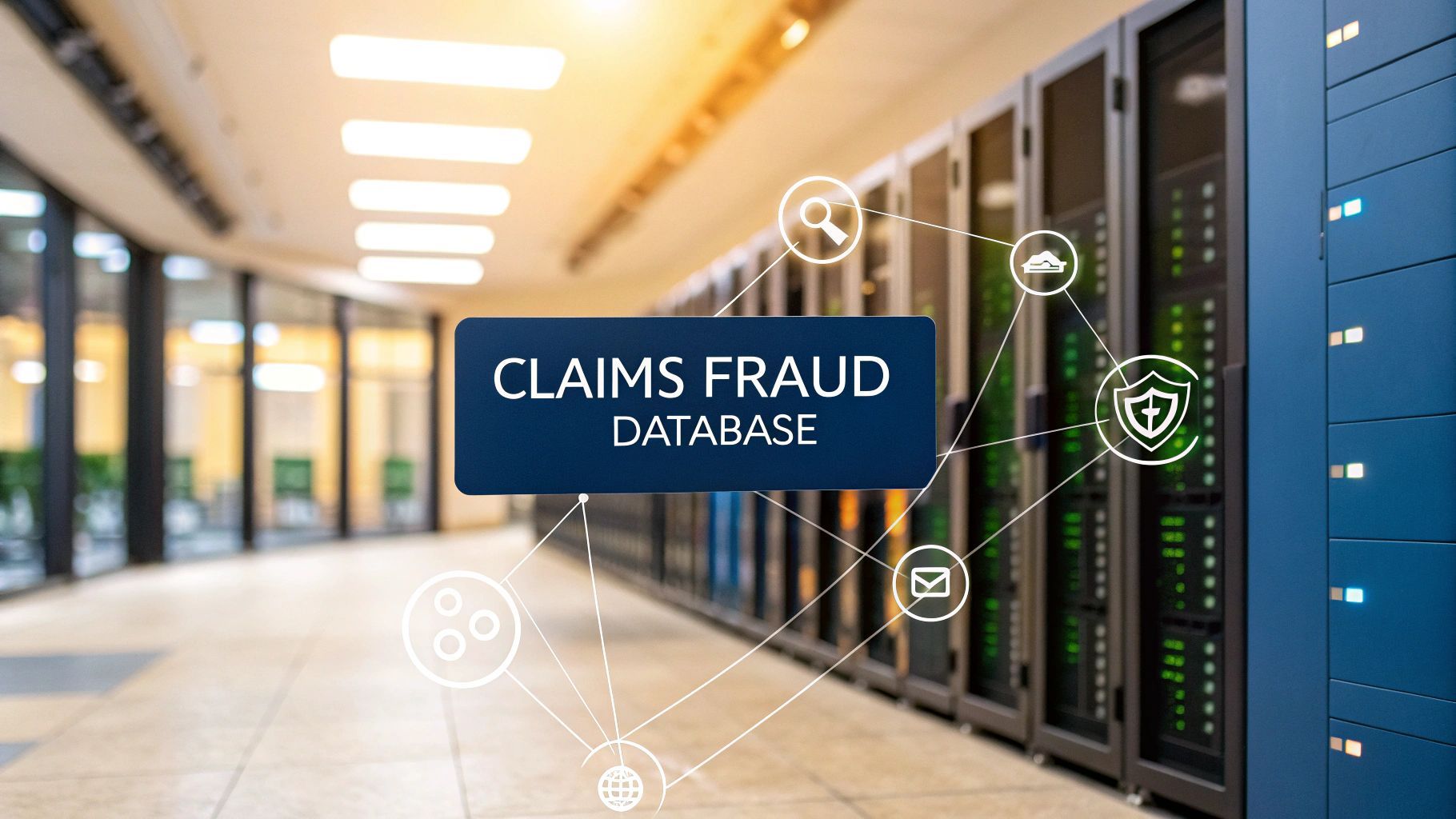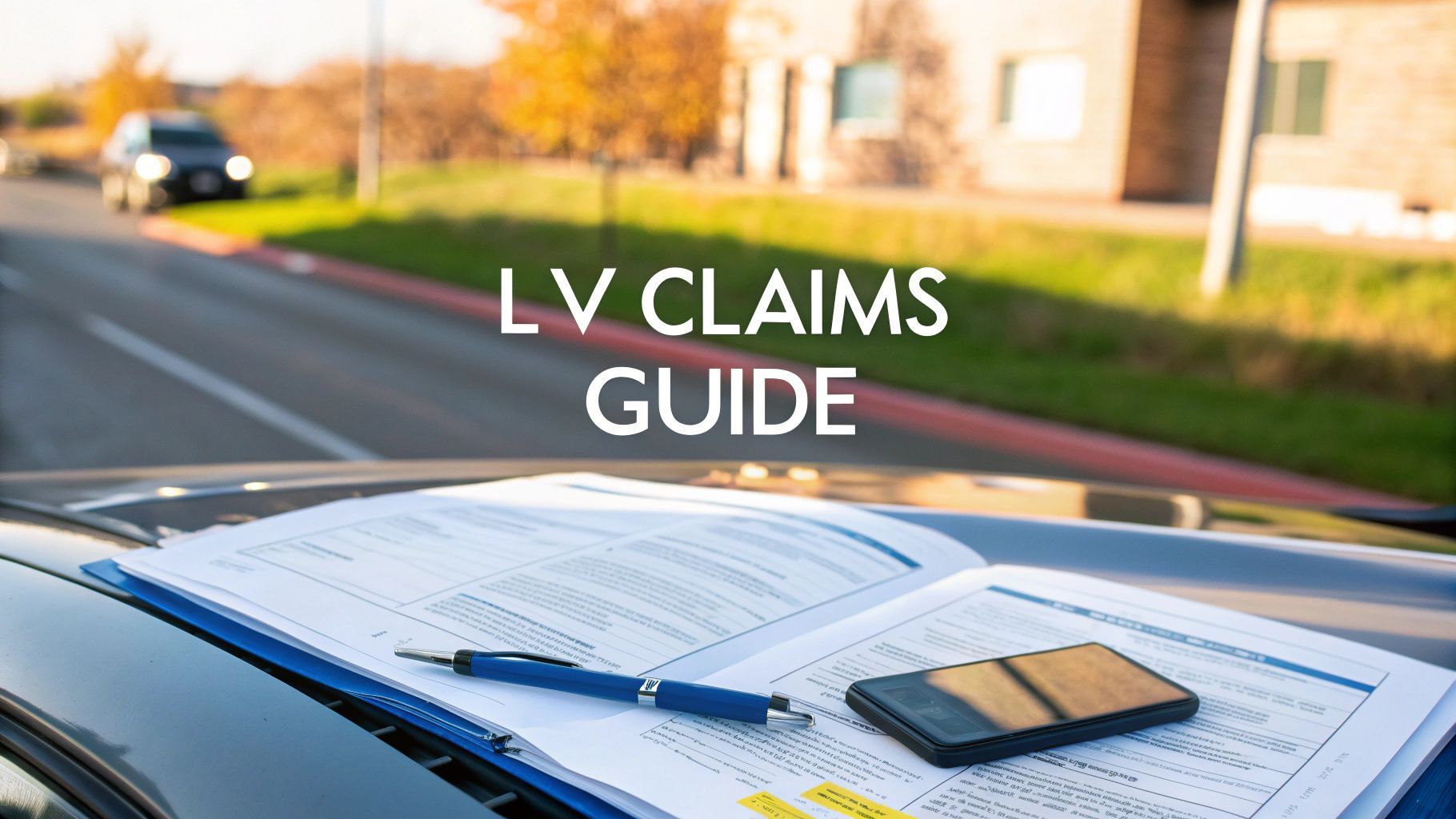AIG Life Insurance UK Explained
Life insurance is one of those things you get hoping you will never need it. It is a financial backstop for the people you leave behind and AIG has been a big name in the UK’s protection market for a long time. This guide is all about AIG life insurance , breaking down what makes a policy dependable and the kind of security it offers. At its heart, it is a contract built on trust, there to provide real peace of mind when it is needed most.
Understanding AIG Life Insurance in the UK
Think of life insurance as a promise. It is a straightforward agreement: you pay regular amounts, called premiums and in return, the insurer provides a tax-free lump sum to your family or chosen beneficiaries when you die. This payout can be a lifeline, helping them cover everything from funeral costs and mortgage payments to just managing day-to-day life without your income.
For this promise to hold up, everyone has to play their part. Insurers need to trust the information you provide and your beneficiaries need to trust that a valid claim will be paid out. This is why the provability of a claim is so central to the entire insurance industry. It is a system designed to protect honest policyholders while weeding out fraudulent activity.
The Impact of Insurance Fraud
You might think insurance fraud is a victimless crime but it hits everyone in the pocket. When someone makes a false or exaggerated claim and gets a payout, it drains the pot of money that all policyholders contribute to. Insurers then have to pass those losses on to everyone else in the form of higher premiums.
That is why AIG, like any responsible insurer, has a duty to investigate claims properly. These checks are not just about protecting their own bottom line; they are about keeping the system fair and affordable for every customer. The cost of fraud is a burden shared by all of us and the industry as a whole.
This diligence is what gives your policy its value. It ensures the financial security you are setting up for your family is built on a foundation that is solid and sustainable.
A firm commitment to validating claims protects the whole insurance ecosystem. It guarantees the premiums paid by honest customers are used for what they are meant for: providing support during life’s toughest moments.
AIG Life in the UK Market
AIG has been a major player in the UK protection market for years, providing policies to millions of people and their families.
A huge shake-up happened recently when Aviva plc acquired AIG Life Limited in September 2023 for £460 million . Before the sale, AIG Life UK was looking after around 1.3 million individual and 1.4 million group protection customers, which shows just how significant its presence in the market was. You can dig into the specifics of the acquisition in the official government report.
Choosing the Right AIG Protection Policy
Picking the right life insurance policy can sometimes feel like you are trying to navigate a maze. With so many different paths, it is easy to get lost. AIG offers a range of options designed for various life stages and financial goals and the real trick is matching the policy’s purpose to your specific needs. Are you trying to protect a young family, cover a mortgage or plan your estate?
Think of it like choosing the right tool for a job. Term life insurance is your temporary safety net, perfect for a specific project. A great example is making sure your mortgage gets paid off if you are no longer around. It provides cover for a fixed period—say, 20 or 30 years —and pays out if you pass away during that time. It is an affordable way to secure major debts and protect your family during their most financially vulnerable years.
On the other hand, whole of life cover is a permanent fixture. It is built to last your entire lifetime, guaranteeing a payout whenever you pass away, as long as you have kept up with the premiums. This makes it an incredibly powerful tool for things like leaving a legacy, covering potential inheritance tax bills or just ensuring your final expenses are sorted without burdening your loved ones.
The infographic below offers a simple decision tree to help you visualise which path might be the best fit for you.

This visual guide walks you through a quick self-assessment, helping to clarify whether AIG's policies align with what you are looking to protect right now.
To give you a clearer picture, here is a quick breakdown of AIG’s main life insurance products.
AIG Life Insurance Products at a Glance
| Policy Type | Primary Purpose | Typical Policyholder | Payout Condition |
|---|---|---|---|
| Term Life Insurance | Covering specific debts like a mortgage or protecting dependents for a set period. | Young families, homeowners or individuals with temporary financial obligations. | Death occurs within the policy term. |
| Whole of Life Insurance | Leaving a financial legacy, covering inheritance tax or paying for final expenses. | Individuals focused on estate planning or wanting to guarantee a payout for their heirs. | Death occurs at any time (as long as premiums are paid). |
| Critical Illness Cover | Providing a lump sum to cover costs associated with a serious illness. | Anyone wanting financial protection against the impact of a major health event. | Diagnosis of a specified critical illness. |
This table should help you see the core differences at a glance, making it easier to pinpoint the policy that best suits your personal circumstances.
Adding an Extra Layer of Protection
Life is not just about what happens when you are gone. For many people, the financial fallout from a serious illness is a major worry. This is exactly where critical illness cover steps in.
It can often be added to a life insurance policy and it pays out a tax-free lump sum if you are diagnosed with a specified condition, like certain types of cancer, a heart attack or a stroke. This money provides crucial financial breathing space when you need it most, allowing you to focus on recovery without the added stress of the mortgage, bills or the cost of specialist medical care.
A policy's real value is its ability to deliver security when it truly matters. Understanding how each type of cover works is the first step toward building a financial plan that genuinely protects your family’s future.
AIG operates in a strong and growing UK life insurance market. In fact, projections show that life insurance revenues in the UK could hit around US$109.6 billion by 2027 , highlighting just how much importance families are placing on financial protection. Interestingly, whole of life insurance held the largest revenue share at 34.09% back in 2020 , showing a strong preference for permanent cover. You can find more information on these UK life insurance market trends from Grand View Research.
Why Full Disclosure on Your Application Matters
An AIG life insurance policy is more than just a piece of paper; it is a promise built on a foundation of "utmost good faith." In simple terms, this is a two-way street of total honesty. You agree to be completely upfront and in return, AIG calculates your premiums and cover based on the health, lifestyle and financial details you provide.
Withholding or fudging information, even slightly, can have devastating consequences down the line. The industry calls this non-disclosure and it is a major red flag. It happens when an applicant does not reveal a "material fact"—basically, any piece of information that would have changed the insurer's mind about offering you a policy or at least the terms of that policy.
It is easy to think small omissions do not matter. Forgetting to mention a past health scare or downplaying a risky hobby might feel harmless at the time but it could put the entire policy at risk when your family needs it most.
The Real Cost of Inaccurate Information
When a claim is eventually made, the insurer has a duty—not just to itself but to all its other policyholders—to check that it is legitimate. This means they will likely review your original application and compare it against things like your medical records. If they find a significant gap between what you said and the reality, they could declare the policy void.
Just think about that for a second. It means your loved ones get nothing. The financial safety net you spent years paying for vanishes, all because of an avoidable error on a form. It is also worth remembering that insurance fraud is not a victimless crime; it pushes up costs for everyone. When insurers have to pay out on dodgy claims, those losses get passed on to honest customers through higher premiums. This cost to all of us and the industry is significant.
Insurance is essentially a collective financial pool. Non-disclosure and fraud are like leaks that drain this pool, forcing everyone else to pay more to keep it topped up. Honesty keeps the system fair and affordable for all.
Protecting Your Policy and Your Family
The good news is that making sure your policy is rock-solid from day one is pretty straightforward. It just takes a bit of diligence and a commitment to being completely honest.
- Dig into your medical history: Take some time to think back through past conditions, treatments and even consultations you might have forgotten.
- Be straight about your lifestyle: This covers everything from smoking and drinking habits to any high-risk hobbies or occupations.
- Double-check everything: Before you hit 'submit' on that AIG life insurance application, give it one final read-through to make sure every answer is spot on.
For both sides of the contract, understanding insurance compliance is crucial, especially when it comes to disclosure rules and ethical practices. Getting it right from the start buys you the genuine peace of mind you are paying for. And if you are worried about what could happen if a claim is ever disputed, it is a good idea to learn about what you can do if an insurance company refuses to pay a claim.
How the Claims Process Uncovers Fraud
When a beneficiary makes a claim on an AIG life insurance policy, it kicks off a crucial verification process. This is not about putting up roadblocks or creating needless delays; it is about upholding the fundamental promise that insurance is built on. The entire system is designed to pay legitimate claims as quickly as possible while shielding the collective pool of funds from fraudulent activity.
The first step is for the beneficiary to notify AIG and provide the necessary documents, most importantly the death certificate. This simple action starts a review where the details of the claim are carefully checked against the information provided when the policy was first taken out.
Think of it as an audit of the original agreement. The insurer makes sure everything lines up, confirming the policy was active and all conditions were met. It is this diligence that stops insurance from becoming an easy target for deception and in the long run, helps keep premiums fair for everyone.
Identifying Different Types of Fraud
Insurance fraud is not a one-size-fits-all problem. It comes in many shapes and sizes, from small exaggerations to highly organised criminal plots. Each type requires a different approach to spot it during a claims investigation.
- Opportunistic Fraud: This is often seen as a minor fib, where someone might stretch the truth about certain details to get a bigger payout. It might seem harmless but when you add up thousands of these "small" claims, the impact on the industry is huge.
- Application Fraud: This happens right at the start, when an applicant deliberately hides important information about their health or lifestyle. It is also known as non-disclosure and it is precisely why insurers need to review medical records when a claim is made.
- Organised Fraud: This is far more serious. It involves premeditated schemes that can include fake documents, staged accidents or even identity theft. These are complex criminal operations that require deep investigation to unravel.
These robust checks are absolutely vital. According to the Association of British Insurers (ABI), insurers detected £1.1 billion worth of dishonest insurance claims in 2022 alone. That figure really hammers home the scale of the issue and why these verification processes, focusing on the provability of claims, are so essential.
The claims process is the final checkpoint that ensures the system works as intended. It validates genuine hardship while filtering out attempts to exploit the trust upon which insurance is built. Every fraudulent claim paid is a cost passed on to honest customers.
The Cost to the Industry and Policyholders
At the end of the day, every fraudulent claim represents a financial loss that has to be absorbed somewhere. This is not just a headache for an insurer's accounting department; it directly affects every single person who pays a premium. The costs racked up from fraud are inevitably factored into the price of all policies.
Insurers are constantly sharpening their tools for spotting deception, using data analytics and specialist teams to identify red flags. This proactive stance is all about fighting fraud before it happens by using verified evidence , which is key to protecting the interests of genuine policyholders.
By understanding how insurers like AIG handle the claims process, you can see why these checks are not just bureaucratic hoops to jump through. They are essential for keeping the insurance market fair, affordable and sustainable for everyone.
How Insurance Fraud Affects Your Premiums
It is easy to think of insurance fraud as a victimless crime that only hits the pockets of massive corporations. But that could not be further from the truth. The reality is that every fraudulent claim sends ripples across the entire industry, directly hitting the cost of cover for honest people seeking protection like AIG life insurance .
Think of the insurance industry as one enormous, collective financial pool. Every single premium paid by policyholders, whether to AIG or someone else, goes into this shared reserve. This is the pot of money used to pay out legitimate claims to families when they need it most.
When a fraudulent claim gets paid out, that money is stolen from the pool. It is not just a loss for the insurer; it is a theft from every other person who faithfully pays their premiums. The cost of this fraud to all of us and the industry is substantial.
The True Cost of Deception
To refill the pot after it has been drained by fraud—and to make sure there is enough cash to cover genuine future claims—insurers have only one option: they have to adjust their prices. This means the cost of that deception gets spread across all customers, leading to higher premiums for everyone. It is a simple case of cause and effect. More fraud means more expensive insurance.
This is why having strong anti-fraud measures is not just about protecting an insurer's bottom line. It is about protecting the integrity and affordability of the whole system for the millions who rely on it.
Insurance fraud undermines the very principle of shared risk. Every false claim paid erodes the collective fund, forcing honest customers to shoulder the financial burden through increased premiums.
Fighting fraud effectively is essential for keeping the insurance market fair and sustainable. When insurers like AIG invest in robust verification and validation processes, they are actively working to keep your AIG life insurance premiums as low as possible. It is a commitment that keeps the system trustworthy, viable and accessible for all.
Understanding the Wider Impact
The fallout from insurance fraud goes well beyond just hiking up your premiums. It sets off a chain reaction that affects the entire ecosystem. Here is a closer look at how different fraudulent activities translate into real-world costs for the industry and its customers.

The Hidden Costs of Insurance Fraud
This table illustrates how fraudulent activities translate into direct and indirect costs for both the industry and honest consumers.
| Type of Fraudulent Activity | Direct Cost to Insurer | Indirect Impact on Policyholders |
|---|---|---|
| Application Fraud (Non-Disclosure) | Inaccurate risk assessment, leading to underpriced policies that do not reflect the true risk. | Increased premiums for all to cover the shortfall from policies that should have been rated higher. |
| Opportunistic Claims Fraud | Paying out on exaggerated or completely fabricated claims, draining the collective financial pool. | Higher overall premiums and potentially longer processing times for genuine claims due to enhanced checks. |
| Organised Criminal Fraud | Significant financial losses from sophisticated, large-scale schemes designed to exploit the system. | Stricter underwriting criteria and the need for more complex anti-fraud systems, which add to operational costs. |
Ultimately, from minor fibs on an application to large-scale criminal operations, every act of fraud contributes to a less efficient and more expensive system for the people who depend on it.
Is AIG the Right Choice for You?
Choosing the right life insurance is a big decision and it is about more than just numbers on a page. When you look at AIG, you are considering a provider with a serious commitment to upholding the integrity of its claims process. That is not just corporate speak; it is a crucial element that protects all policyholders from the financial fallout of insurance fraud, keeping the whole system fair and affordable.
Their long-standing presence in the UK market, now with the backing of Aviva, means they offer a solid range of policies designed for real-life situations—from covering the mortgage to planning your estate. At the end of the day, the real value of a policy is knowing your loved ones will have a financial safety net they can count on when it matters most.
Questions to Ask Yourself
So, is AIG the right fit? There is no one-size-fits-all answer but thinking through your own circumstances is the best place to start. These questions should help guide you:
- Who depends on you? Think about who relies on your income and what they would truly need to keep their standard of living without it.
- What debts are you carrying? Do you have a mortgage or other major loans that would become a burden for your family to settle?
- What are your future plans? Are you hoping to cover university fees for your children or leave a specific inheritance behind?
- What does peace of mind look like? Honestly, what level of security do you need to feel confident that your family is protected, no matter what happens?
Choosing an insurer is about more than just a policy; it is about entrusting your family’s future to a reliable partner. A provider’s dedication to validating claims underpins the value of that trust.
Answering these questions will bring your priorities into sharp focus and help you find a provider that offers genuine security. To get a feel for how AIG stacks up against the competition, you can learn more about the leading UK insurers and see what they bring to the table.
Still Have Questions?
It is completely normal to have a few questions when you are looking into life insurance, especially with big news like the recent Aviva acquisition of AIG Life. Let us clear up some of the most common queries we hear.
What’s Happening to My AIG Policy Now That Aviva Is in Charge?
If you are an existing AIG Life UK policyholder, the short answer is: nothing changes for you. Your cover is still fully in place and all the original terms and conditions are exactly the same.
The acquisition simply means your policy is now looked after by Aviva, one of the UK’s largest and most established insurance groups. Their commitment to paying valid claims is unwavering, so your financial protection continues without a single interruption.
How Long Does It Usually Take for a Claim to Be Paid?
The time it takes to process a claim can vary but most straightforward ones are sorted out pretty quickly. We often see payouts completed within a couple of weeks, once all the necessary documents have been received.
Delays can pop up, though. This usually happens if the insurer needs to dig a bit deeper, maybe because some information on the original application was incomplete or there is a concern about non-disclosure.
The core reason for claim reviews is to maintain the integrity of the insurance system. Insurers have a responsibility to all policyholders to ensure that payouts are legitimate, which protects the collective fund from fraud and helps keep premiums affordable for everyone.
Is It Okay to Have More Than One Life Insurance Policy?
Yes, absolutely. It is perfectly legal and often a very sensible strategy to hold multiple life insurance policies.
For example, you might have one policy dedicated to clearing your mortgage and another designed to provide a separate lump sum for your family’s ongoing living costs. The crucial thing to remember is to disclose any existing policies when you apply for new cover. It is a key piece of information for the underwriting process.
At Proova , our goal is to make the entire insurance process simpler. We help you securely document your assets from day one, creating a clear, verified record. This small step can make any future claims process smoother and faster for everyone involved. Find out how we support both policyholders and insurers at https://www.proova.com.












